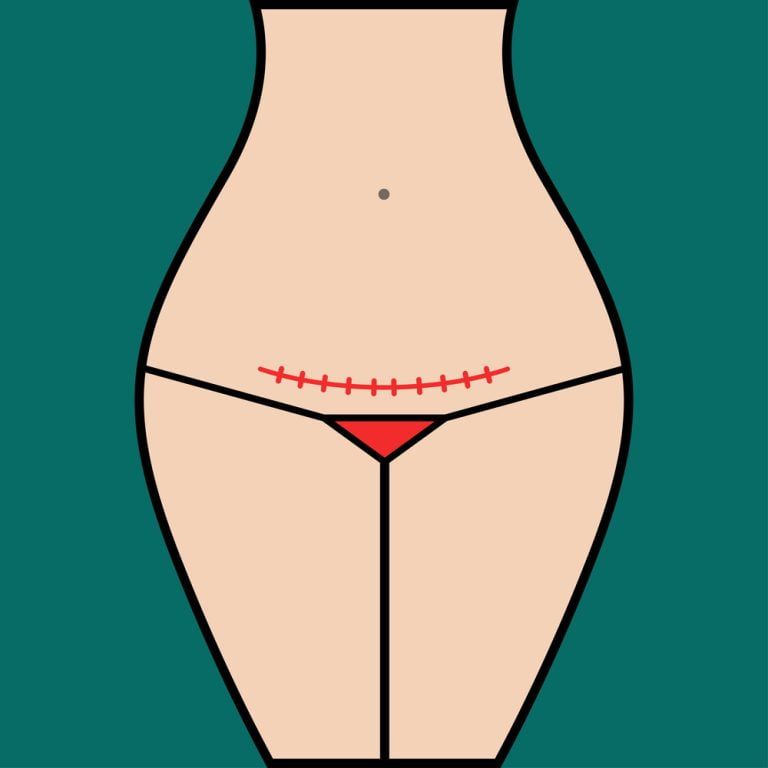Seeing a blob of mucus in your underwear or toilet paper in the 3rd trimester is incredibly exciting. Until you learn, it could still be days or even weeks until you get to meet your little one. Your plug could even regenerate!
Fortunately, as long as your baby is ready, there are a few things you can do to move things along. Here’s how to speed up labor after losing your mucus plug and, importantly, the methods to avoid it.
Does Losing Your Mucus Plug Mean Labor Is Imminent?
Losing your mucus plug isn’t a reliable indicator of labor. Yes, it has to come out before your baby does, but sometimes it can dislodge too soon. This means you could still be hours, days, or even weeks away from meeting your little one.
If you lose your mucus plug before 37 weeks, report it to your doctor, as there is an increased risk of early labor or infection. But don’t panic. These risks are incredibly low, and your body can make a new plug.
If you are more than 37 weeks pregnant, you may lose your mucus plug after sexual intercourse, a cervical exam, or vigorous exercise. But if your baby’s not ready, it will just reform.
However, if you’re showing other signs of early labor, like:
- Back pain
- Diarrhea
- Feeling like your baby has dropped into your pelvis
- Small contractions or tightenings
- The urge to have a bowel movement
Your plug may have dislodged as your cervix has dilated. If so, pack your hospital bag and try these tips.
The Best 8 Ways to Speed up Labor After Losing Your Mucus Plug
1. Exercise
Exercise is a safe and effective way to speed up labor, and it doesn’t need to be anything strenuous. Walking, swimming, or going up and down stairs is often enough to help things along.
To take things up a notch, some recommend curb walking. This is walking with one foot up on the curb and the other on the road. The imbalance can open your hips and help your labor progress.
2. Bouncing on a Birth Ball
Bouncing gently on a birth ball will keep your body moving and help your baby get into a good position for labor. To make this extra effective, try moving your hips in circles or tracing out the letters of the alphabet.
3. Membrane Sweep
If you’re full-term, your doctor or midwife may be willing to perform a membrane sweep. This is a procedure where they’ll sweep around your cervix with their fingers. The idea is to separate the amniotic sac membranes from the cervix and start labor.
4. Sexual Intercourse
The prostaglandins in semen can soften the cervix, helping it to dilate. Plus, having an orgasm will trigger the release of oxytocin, a hormone that can stimulate your uterus to contract. Win-win.
While sex is considered safe after losing your mucus plug, you should avoid it if your waters have broken. This is due to the increased risk of infection.
5. Nipple Stimulation
Like with orgasms, nipple or breast stimulation triggers the release of oxytocin and can kick-start your contractions. Using a breast pump can also have the same effect.
6. Dates
Eating 6 dates a day, 4 weeks before your due date, has been shown to:
- Increase cervical dilation
- Shorten labor
- Significantly reduce the need for induction.
Unlike other foods and natural home remedies, this one actually works.
7. Acupuncture
While studies show mixed results, acupuncture may help shorten labor. However, seeing a professional specializing in pregnancy is essential.
8. Acupressure
Although research is limited, some believe that acupressure can help start contractions. It’s also safe and effective to try at home.
Here’s how to do it:
- Locate the following points:
- Four fingers above the inner ankle (SP6)
- The center of your palm (PC8)
- The webbing between your thumb and pointer finger (LI4)
- The depression between your ankle and Achilles tendon (BL60)
- Apply firm pressure.
- Massage in a circular motion for 10 to 30 seconds.
- Rest for 1 minute.
- Repeat for as long as it is comfortable or until you get bored.
Labor-Inducing Methods to Avoid
While many of the methods listed above lack clinical evidence, none of them are harmful, so they’re worth a shot. Unfortunately, this isn’t true for all home induction tips. Not even the ones that midwives have recommended for years!
Here are the remedies you should think twice about using, and if you still want to try them, speak to your doctor first.
Castor Oil
Some recommend taking castor oil on its own or drinking it as part of a “midwives’ brew.” While it has been shown to induce contractions in a few cases, it’s far more likely to cause nausea, diarrhea, and vomiting. This could lead to dehydration and stress, which are dangerous for both you and your baby.
Raspberry Leaf Tea
Drinking raspberry leaf tea may speed labor up by a small amount. For example, one study found that it shortened the length of the second stage by around 10 minutes.
However, for it to work, you should start drinking it at around 32 weeks, beginning with small amounts. Suddenly drinking the tea once you’ve lost your mucus plug can trigger extreme contractions. This could distress your baby, and it won’t be very pleasant for you either!
Evening Primrose Oil
Using evening primrose oil to shorten labor is another dangerous and ineffective old wives’ tale. Studies have shown that it won’t do anything to speed things up, but instead raises the risk of several birth complications.
Pineapple
Eating a normal amount of pineapple while pregnant is perfectly safe. But to speed up birth, you’d have to eat 7 whole pineapples, including the core. As you can imagine, the resulting nausea and diarrhea wouldn’t be worth the minor effects.
Spicy Food
Similarly, spicy food is often recommended to induce labor at home. Unfortunately, it’s extremely unlikely to work. Plus, suddenly adding a lot of spice to your diet could trigger heartburn or diarrhea. Even if it does speed up your labor, no one wants to give birth with an upset stomach.
Final Thoughts
Although it’s understandable to want to speed up labor after losing your mucus plug, your baby will come when they’re ready. So don’t do anything that could make you feel uncomfortable or nauseous.
By far, the best strategy is to keep your body moving, whether through walking, exercising, or bouncing on a birth ball. These will help your baby get into the right position, which is the most effective way to have a smooth, quick birth. Oh, and eating a few dates helps too!




